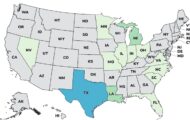One week after an undercover video prompted the U.S. Department of Agriculture (USDA) to suspend operations at Central Valley Meat in Hanford, Calif., for what it described as “disturbing evidence of inhumane treatment of cattle,” the company says it is reopened for business.
 “Sunday afternoon, the USDA informed us that it has accepted our action plan and we are free to reopen. With the announcement of that decision, Central Valley Meat will resume operations Monday morning and welcome our employees back to work,” the statement said. “We have worked closely with both inspectors and industry experts while developing our USDA-approved action plan. As a result, Central Valley Meat will provide better training for our workers, better monitoring of our facilities, and more frequent third-party audits of our operations. We believe these measures will establish a new industry standard for the handling of animals.”
“Sunday afternoon, the USDA informed us that it has accepted our action plan and we are free to reopen. With the announcement of that decision, Central Valley Meat will resume operations Monday morning and welcome our employees back to work,” the statement said. “We have worked closely with both inspectors and industry experts while developing our USDA-approved action plan. As a result, Central Valley Meat will provide better training for our workers, better monitoring of our facilities, and more frequent third-party audits of our operations. We believe these measures will establish a new industry standard for the handling of animals.”
Last week, after receiving the video, from Compassion Over Killing, the USDA sent several teams of investigators to California to gather information. The inspectors found humane handling violations and suspended operations, but said that inspectors did not find any violations that posed a food safety concern such as downer cattle entering the food system.
The video prompted McDonalds, In-N-Out Burger, Costco and the USDA to announce that they would suspend purchases from the company. In response to the backlash, Central Valley Meat distributed to various media outlets a statement by renown professor of animal science, Temple Grandin, who reviewed the video several times.
Grandin said some of the observations made by the narrator of the video are incorrect and that the cattle are stunned properly but that there was “overly aggressive and unacceptable use of electric prods with non-ambulatory cattle and in sensitive areas like the face. While there are times when prods are absolutely necessary, they must be used sparingly and never in the face or other sensitive areas. I would classify this as egregious animal abuse. This plant needs to rely less on prods and move to lower stress driving tools. Devices as simple as a stick with an inflated plastic bag on the end can be extremely effective in moving livestock. In general, cattle are handled much more easily by calm and patient handlers. The more agitated they become, the more difficult they become to move. I have advised the company about specific strategies for improving handling, like using a simple sheet of cardboard to move animals.”
Many of the animals slaughtered at Central Valley are “spent” or, no longer productive, dairy cows, many of whom should have been euthanized on their farms, according to Grandin. “Some of the major issues in the video originate due to the poor condition of the animals arriving at the plant, many of which should have been euthanized on the farm. I urge the dairy industry to market their cows before they become weak and extremely debilitated.”
The USDA was unable to respond for requests for more information about this story by press time.




